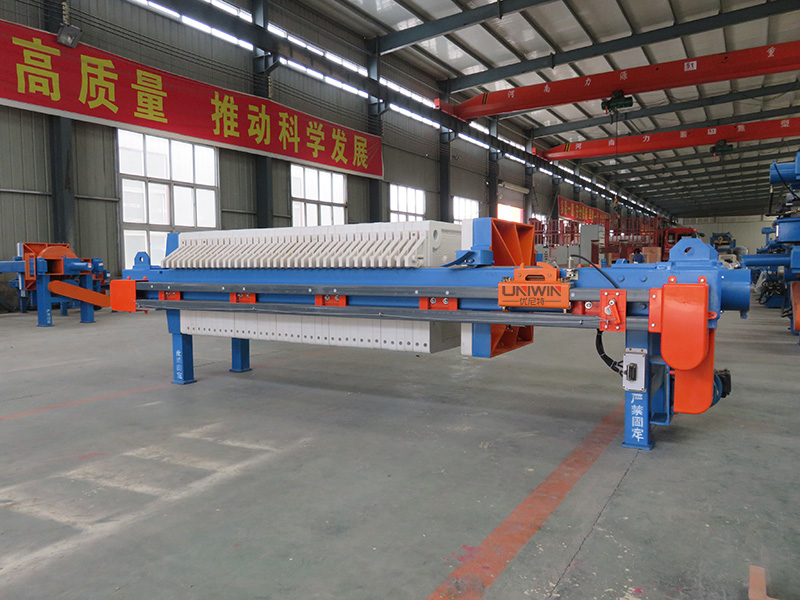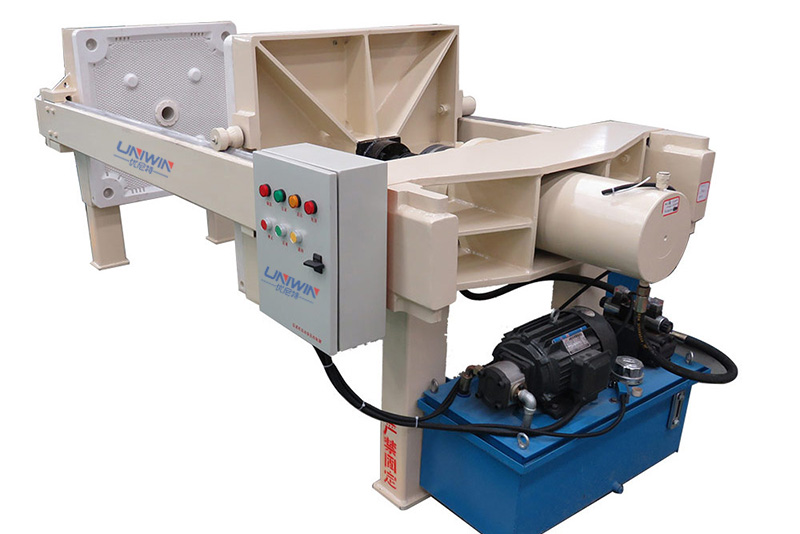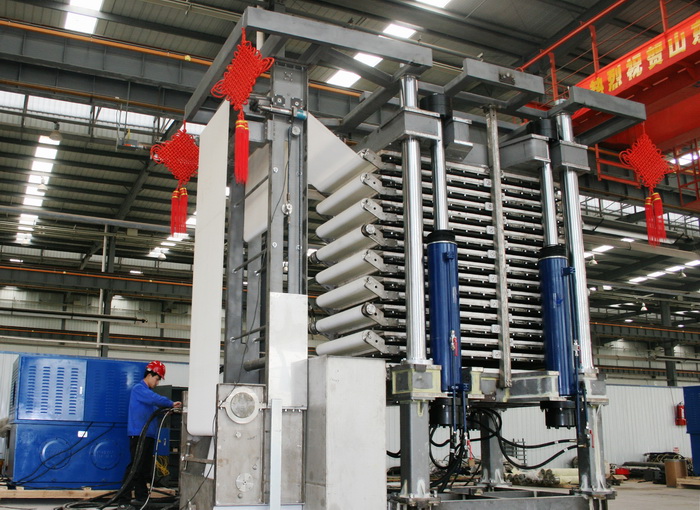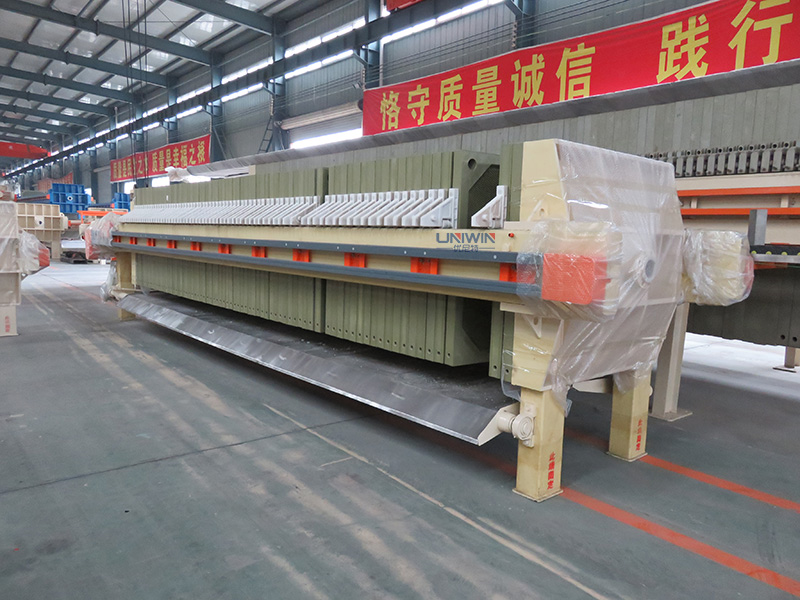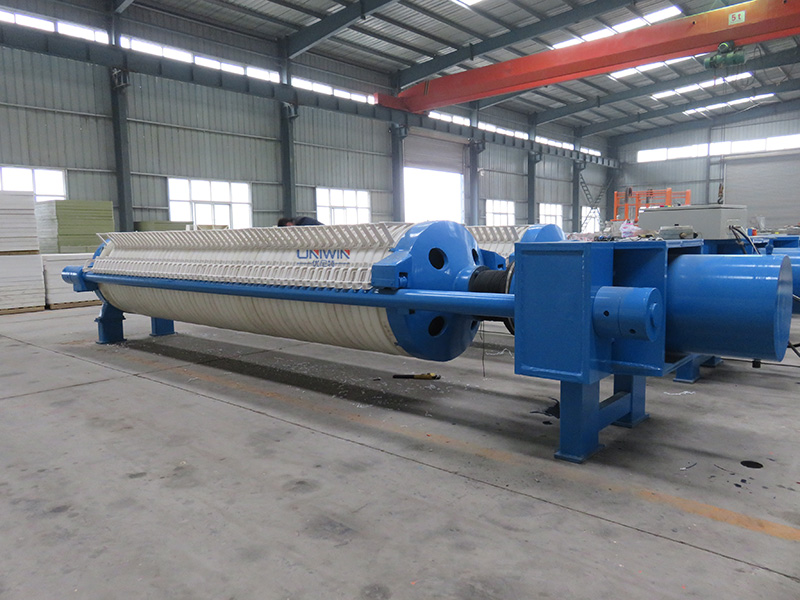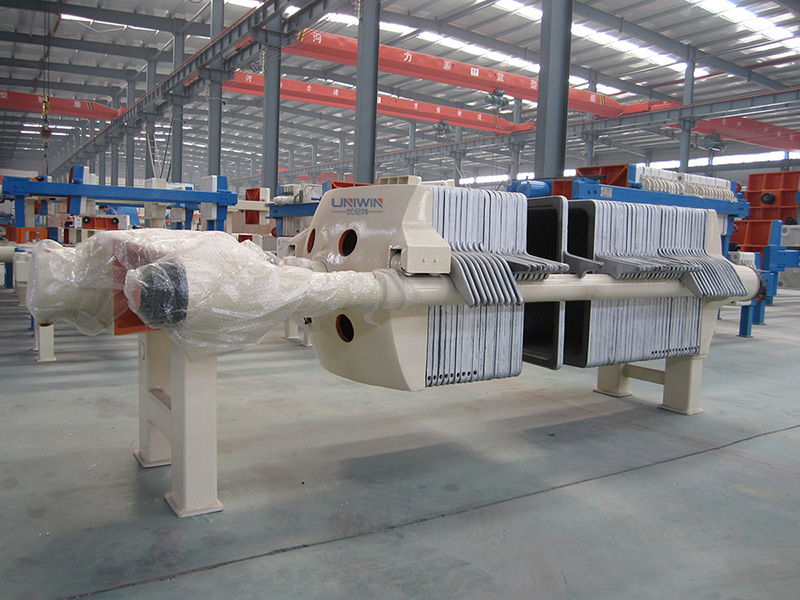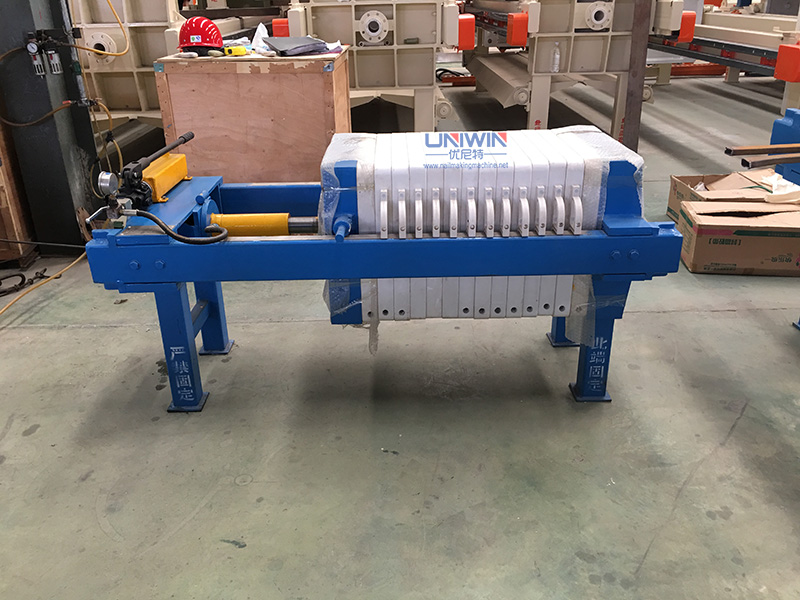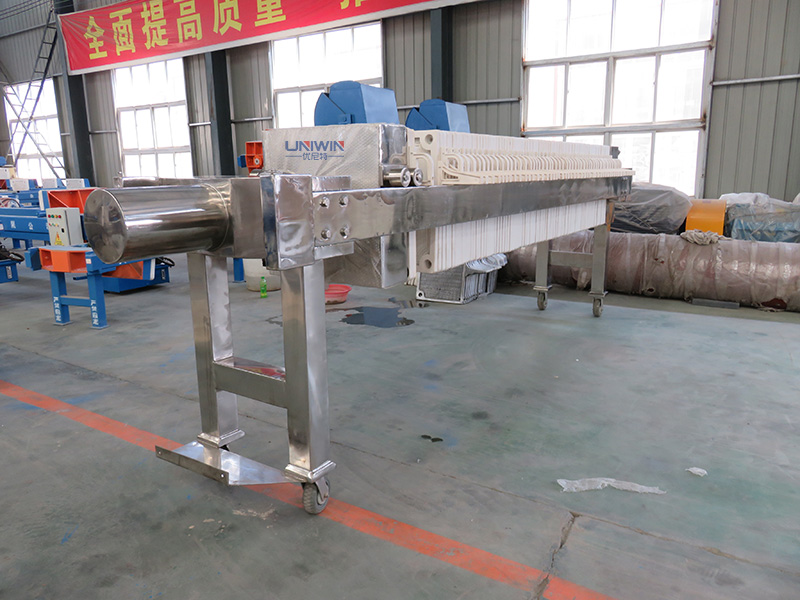8 Types of filter press
A filter press is a mechanical dehydration device that uses a filter medium for solid-liquid separation. The structure of the whole machine is simple, the separation effect is good, the operation is convenient, and the application range is wide. It is widely used in the fields of mining, petroleum, chemical industry, medicine, papermaking, food, coal washing, and water treatment.
Filter presses are mainly divided into plate and frame filter presses, chamber filter presses, vertical filter presses, membrane filter press, high-pressure round filter press, cast Iron filter press, manual jack filter press, and stainless steel filter press. The following is an introduction to these filter presses.
1. Plate and frame filter press
The plate and frame filter press is mainly composed of a thrust plate, a compression plate, a filter plate and a filter frame, a beam, a filter medium, a compression device, a liquid collection tank, etc. The plates and frames are arranged alternately, and the two sides of the filter plates are covered with filter cloth. The plates and frames are pressed tightly by a pressing device, and a filter press chamber is formed between the plates and frames. There are holes on the corners of the filter frame and filter plate, which form a complete channel after assembly, which can pass into the suspension, wash water, and lead out the filtrate.
Features:
- Simple structure and convenient operation;
- Stable operation and convenient maintenance;
- Flexible selection of filter area, small footprint;
- Strong adaptability to materials, suitable for various small and medium-sized sludge dehydration treatments.
2. Recessed plate filter press
The structure of the recessed filter press is similar to that of the plate and frame filter press, but the single filter plate of the recessed plate filter press is thicker than the plate and frame filter press plate, and the recessed plate filter press consists of two identical filter plates. When the two filter plates are pressurized, a filter chamber is formed, which is used to store granular objects separated by filter cloth, and the feed hole is placed in the center of the filter plate, which is usually used for materials with larger particles, such as sewage treatment, mineral processing, coal washing, etc. The recessed chamber filter press can withstand a filtration pressure of up to 1.0Mpa and can be easily unloaded by an automatic pull plate. Therefore, it has wider adaptability.
Features:
- Feed from the center hole which enables the chamber to fill faster and more evenly, thereby reducing the risk of clogging due to uneven pressure and causing damage to the plate.
- Higher feed pressure can be achieved through the alcove design to prevent the filter plate from bending under high pressure.
- Easier cake unloading with recessed plates.
3. Vertical filter presses
The filter plates of the vertical filter press are superposed both horizontally and up and down to form a group of filter chambers, which occupy a small area. It adopts a continuous filter belt; after the completion of filtering, it moves the filter belt and unloads the filter cake, and cleans the filter belt. The operation is automatic, so it is also called filter cloth fully walking automatic filter press.
Features:
- Large production capacity and a high degree of automation. The processing capacity is 6 times that of the plate and frame filter press.
- The water content of the filter cake is low, and the maximum extrusion pressure can reach 1.6Mpa.
- The washing step is added, the washing performance is good, the front and back of the filter cloth can be used alternately, and it has renewable self-cleaning performance.
- The structure is compact, and the floor area is small, which can save the cost of the workshop.
- The equipment is completely controlled by the PLC control cabinet, with functions such as self-test and automatic alarm.
4. Membrane filter presses
A membrane filter press is a batch filter press equipment used for solid-liquid separation of various slurries. The membrane filter press is equipped with a layer of membrane between the filter plate and filter cloth. During use, when the feeding is finished, high-pressure fluid or gas medium can be injected into the membrane plate/Diaphragm plate, and the entire membrane will bulge to press the filter cake, thereby achieving further dehydration of the filter cake.
Features:
- Shorten the filtering operation time and save power consumption.
- Further, it reduces the water content of the filter cake, which can generally reach about 9%.
- Compared with the plate and frame filter press, the effective filtration area is enlarged, and the filtration speed is accelerated.
- The degree of automation is higher, making the control and operation more convenient.
- The diaphragm filter plate has the characteristics of anti-fatigue, anti-aging, and good sealing performance.
- It is convenient to replace the filter cloth.
5. High-pressure round filter press
The high-pressure round filter press uses a circular filter plate. This special design makes it an ideal solid-liquid separation equipment in many fields, including the ceramic industry, stone wastewater treatment, kaolin, building materials, etc. In addition, it’s high pressure increases processing capacity, improves work efficiency, and reduces moisture in solid materials.
Features:
- The round filter plate is resistant to high pressure, and the moisture content of the filter cake is low.
- Stable operation, high feed pressure.
- High unit output and long life.
6. Cast Iron Filter Press
Cast iron filter press is a kind of solid-liquid filtration equipment composed of a thrust plate, cast iron compression plate (manual compression, mechanical compression, hydraulic compression), oil cylinder block, and main beam.
- Manual compression: the filter plate is compressed by pushing the middle top plate with a screw mechanical jack.
- Mechanical pressing: When pressing, the motor rotates forward, drives the reducer, makes the screw rotate in the nut, and pushes the middle top plate to press the plate frame tightly.
- Hydraulic compression: Push the manual valve to make the hydraulic station provide high-pressure oil through the gear pump to push out the piston rod and screw rod and push the middle top plate to compress the plate frame.
Cast iron filter plates are suitable for filtering various high-temperature materials, especially for temperatures higher than 80-100 degrees and high-temperature resistance.
Features:
- Suitable for filtration of high-temperature materials.
- The filter plate has high strength, withstands high filtration pressure, and has a long service life.
7. Manual Jack Filter Press
The manual jack filter press uses a dry screw jack as a compacting device, which is generally used for small filter presses such as 320 and 450. The filter plate is made of polypropylene, the frame structure is made of carbon steel, and the pressing form is manual hydraulic.
Features:
- Simple structure
- Easy to operate
- No power supply required
- Economical and practical
8. Stainless Steel Filter Press
SUS filter press normally adopts hydraulic closing. Compared with normal PP filter, filter plates of stainless steel filter press are made of S.S.304 or S.S.316. In China, stainless steel filter press normally refers to stainless steel 304 filter press. It’s mainly used for solid-liquid separation of high sanitation materials.
Features:
1. The board is made of S.S.303/316 material. Strong corrosion resistance, high-temperature resistance, and long service life.
2. The plate and frame design is adopted, and different filter media are used according to different filter requirements to achieve the best filter performance.
3. Larger capacity. The stainless steel filter press can be squeezed through the hydraulic system, so the filtering area and filtering capacity are greatly increased, and the filtering effect is better.
4. Easy to clean. The entire structure is coated in stainless steel.
5. It can meet the requirements of the food and pharmaceutical industries.

